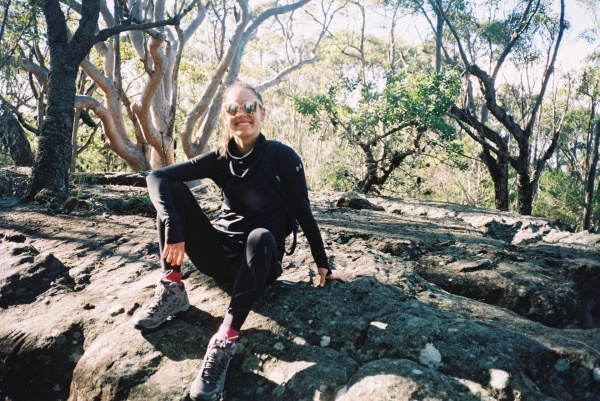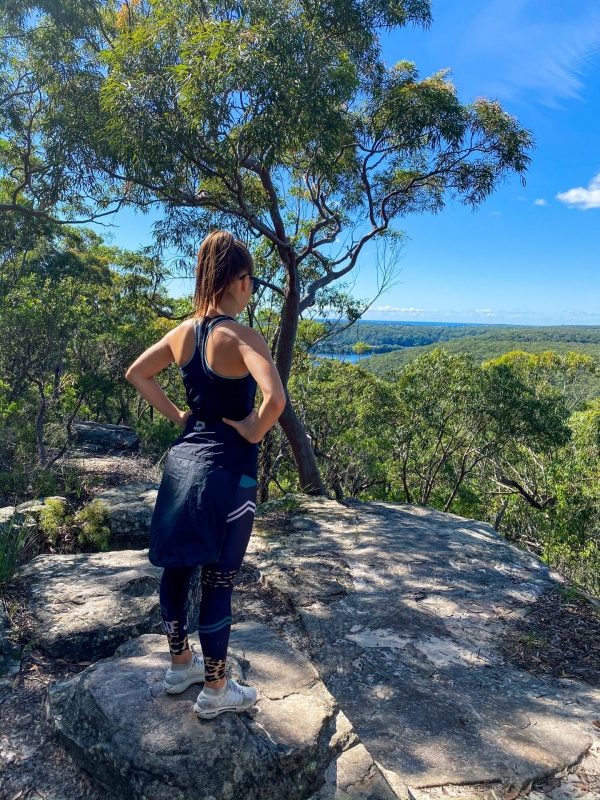
Marlee Silva with her dad Rod Silva on on Dharrawal Country
- Culture
What connection to Country means to me
Marlee Silva shares her advice, and we can all learn from it
By Marlee Silva
When I am asked to explain what a connection to Country feels like as an Aboriginal woman, I struggle to find the words that truly encapsulate the weight of the unbroken intertwining of my people and 60,000 years of their stories, struggles and successes; and the soil at my feet.
But through the pandemic as I’ve watched so many non-Indigenous people embracing their basic human instinct to go home to Mother Earth, my sense of hope has been renewed. This hope hinges on my belief that every human being has the capability to recognise and practice a deep respect for the land they live and work on and ignite a passion for protecting it.
I believe it’s the key to ensuring we have a liveable Earth for the generations to come.

Right now in Australia as we return to normality away from the COVID-19 pandemic – and thankfully so – I’m afraid we’re also falling back into our bad habits of fast-paced lives that don’t have a connection to the natural world.
So, how do we combat that?
LEARN ABOUT THE COUNTRY YOU LIVE ON
No matter where you live in Australia, you live on Aboriginal land and considering the 60,000 year history of our culture, you can guarantee every single city, town and suburb holds incredible stories that deserve to be heard.
Start this journey of reconnection by knowing whose Country you live on, and seek the stories connected to it. A quick Google search generally holds the answer and from there find ways to connect with your local Aboriginal community, hear the stories they have to share and find out how they are seeking to protect Country, and how you might be able to be involved.
Growing up on Dharrawal Country, south of Sydney and away from my family’s traditional home, I found learning the history of the mob here was the best way to find my sense of belonging and simultaneously, it brought new wonder to the environment I thought I knew so well.
Now every time I head out to Kurnell National Park, right at the site where Cook landed, it’s not his story I am reminded of, but that of the Gweagal Clan, and their relationship with the whale migration that happens every year.
I think about how the number of whales determined if it was going to be a good fishing season; how the whales were also the form their ancestors took in the dreamtime and by grounding yourself in the place you call home with these stories, you bring a whole new layer to your existence.

TREAT NATURE AS MEDICINE
In that brief pre-COVID era of 2020, I had someone pose to me, that while the Australian identity is a complex and multifaceted concept with no clear definition, there are two universalities that each of us who call this continent home, should hold at its foundations: the culture and history of Aboriginal and Torres Strait Islander people, and our native flora, fauna and environmental landscapes.
In any other point in history, I might have dismissed this point as oversimplification or disregarded it all together, but as we rose from the ashes of one of our worst ever fire seasons only to be abruptly hit with a global pandemic, cut off from the rest of the world and each other with social isolation, I was amazed to watch it ring so true.
With lockdown and limitations on where we could go and what we could do, I watched the vast majority of the people in my life through social media, across news outlets and even just by watching out of my bedroom window, react to an unprecedented, once in a generation crisis, in the same way.
We all sought the company of nature. A bush walk, a moment by a beach or lake or any nearby body of water, whatever the Country we lived on had to offer is where our souls guided us first.
Why? Because the natural world is, for us as a species, our original place of healing. Our bodies and our spirits knew with the great shock of the last year, the natural world was where we needed to be. This practice of making time for ourselves in these spaces should be something we carry on well beyond the COVID era.
SHARE WITH THE PEOPLE AROUND YOU
Through this reconnection journey, I believe it is so important to bring those around you along for the ride. Sharing the wonder of new stories and meanings of the natural world you engage with every day with the people you care about, enriches and cements the experience further.
Reconnecting to nature can also be the place you reconnect with your loved ones. So as we make time to take that bush walk or beach walk or bird watching afternoon, make the time to take someone with you and spread that understanding of how vital this practice is, not only for our wellbeing, but also for increasing our passion for the protection of our Earth.
RELATED: The activists to watch in 2021
RELATED: The wonder of storytelling according to Kirli Saunders
